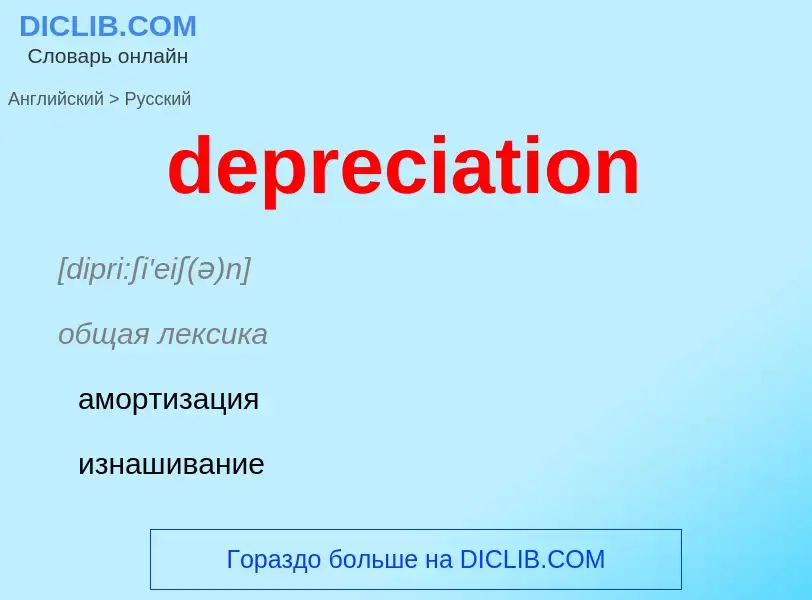Translation and analysis of words by ChatGPT artificial intelligence
On this page you can get a detailed analysis of a word or phrase, produced by the best artificial intelligence technology to date:
- how the word is used
- frequency of use
- it is used more often in oral or written speech
- word translation options
- usage examples (several phrases with translation)
- etymology
depreciation - translation to russian
[dipri:ʃi'eiʃ(ə)n]
общая лексика
амортизация
изнашивание
снижение
падение
нефтегазовая промышленность
износ
физический износ
моральный износ
техническое устаревание
конструктивное устаревание
существительное
общая лексика
умаление
уничижение
недооценка
пренебрежение
снижение стоимости
скидка на порчу товара
обесценивание, обесценение
экономика
обесценивание
обесценение (снижение стоимости чего-л. (напр., денег, валюты, товаров, объектов собственности и т. п.))
бухгалтерский учет
амортизация (постепенное списание стоимости актива в расходы тех отчетных периодов, в которых ожидается получение выгод от использования этого актива; в Великобритании данный термин употребляется только по отношению к материальным активам, а для обозначения амортизации нематериальных активов используется термин "amortization")
техника
изнашивание
физический или моральный износ (оборудования)
амортизация, изнашивание
Definition
Wikipedia
In accountancy, depreciation is a term that refers to two aspects of the same concept: first, the actual decrease of fair value of an asset, such as the decrease in value of factory equipment each year as it is used and wear, and second, the allocation in accounting statements of the original cost of the assets to periods in which the assets are used (depreciation with the matching principle).
Depreciation is thus the decrease in the value of assets and the method used to reallocate, or "write down" the cost of a tangible asset (such as equipment) over its useful life span. Businesses depreciate long-term assets for both accounting and tax purposes. The decrease in value of the asset affects the balance sheet of a business or entity, and the method of depreciating the asset, accounting-wise, affects the net income, and thus the income statement that they report. Generally, the cost is allocated as depreciation expense among the periods in which the asset is expected to be used.
Methods of computing depreciation, and the periods over which assets are depreciated, may vary between asset types within the same business and may vary for tax purposes. These may be specified by law or accounting standards, which may vary by country. There are several standard methods of computing depreciation expense, including fixed percentage, straight line, and declining balance methods. Depreciation expense generally begins when the asset is placed in service. For example, a depreciation expense of 100 per year for five years may be recognized for an asset costing 500. Depreciation has been defined as the diminution in the utility or value of an asset and is a non-cash expense. It does not result in any cash outflow; it just means that the asset is not worth as much as it used to be. Causes of depreciation are natural wear and tear.

